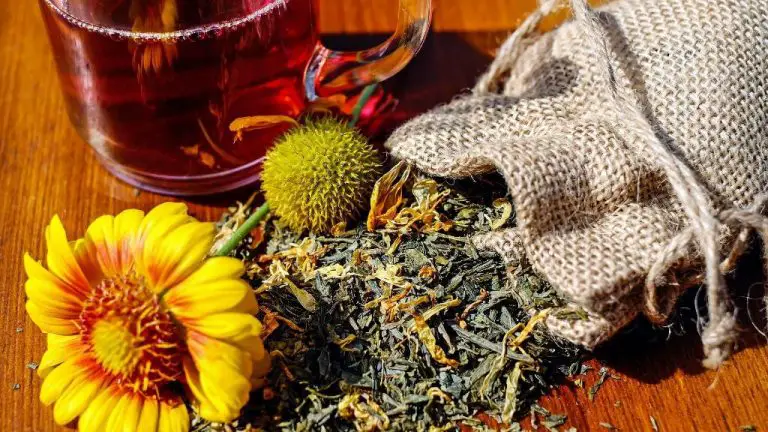How Do You Make Fruit Smelling Candles?
Fruit scented candles have become increasingly popular for their sweet, fresh, and uplifting aromas. Unlike traditional candle scents like vanilla or lavender, fruit candles offer more unique and vibrant fragrance options. Popular fruit scent choices for candles include citrus fruits like grapefruit, lemon, lime, and orange as well as tropical fruits like coconut, mango, banana, pineapple, and guava.
People create fruit scented candles for a variety of reasons. Many enjoy lighting a fruit candle to establish a pleasant or soothing atmosphere. The fruity aromas can be energizing and mood-lifting. Fruit candles are often used for aromatherapy purposes and to promote relaxation. Others simply appreciate the novelty of the less common fruit scents. The candles make great homemade gifts as well. Overall, fruit scented candles allow people to enjoy their preferred fruity aromas in candle form.
Benefits of Fruit-Scented Candles
Fruit-scented candles provide many benefits beyond just lighting up a room. The fragrant fruity aromas can promote relaxation, provide aromatherapy benefits, and add natural fragrance to your home. The relaxing properties of fruit scents like peach, strawberry, and citrus can help calm the mind and reduce stress. Taking in the sweet fruity fragrances provides a peaceful ambiance to enhance mindfulness. The aromatherapy qualities can also boost mood and energy. Fruit essences like grapefruit, lemon, and orange have an uplifting and refreshing effect. The natural fragrance from real fruit oils is preferable to artificial fragrances. Fruit-scented candles infuse your living space with evocative fruity scents reminiscent of an orchard or fruit garden. Allowing the fruity aromas to waft through the air provides a pleasant and soothing sensory experience.
Equipment Needed
Making fruit scented candles requires some basic equipment that you’ll likely already have available or can easily find. Here are the main items you’ll need:
Wax
The most common waxes used for candle making are paraffin, soy, and beeswax. Paraffin wax is derived from petroleum, while soy wax comes from soybeans. Beeswax is made by honey bees. Each type of wax has different properties – paraffin offers a smooth finish and bright colors, soy is natural and eco-friendly, and beeswax has a subtle honey aroma. For fruit scented candles, paraffin or soy wax are recommended.
Wicks
Wicks are the component that you light to burn the candle. They transport wax to the flame. Wicks come in different materials like cotton, wood, and paper. For fruit scented candles, cotton wicks work well as they have a flat braid that provides a consistent burn.
Fragrance Oils
Fragrance oils are mixed with wax to give candles scent. There are many fruit fragrance oils to choose from like apple, peach, mango, and more. Use pure fragrance oils formulated for candle making for best results.
Pouring Pots
You’ll need a heat safe pouring pot, pan, or pitcher to melt wax in before pouring into molds. Glass, stainless steel, or aluminum work well.
Molds
Candle molds give shape to the melted wax as it hardens. Silicone molds provide easy release. Molds come in many shapes like jars, tins, and pillars.
Choosing Fragrance Oils
When making fruit scented candles, you have two main options for adding fragrance – essential oils or fragrance oils. Essential oils are extracted from plants, while fragrance oils are synthetic blends. For candles, fragrance oils are generally preferred over essential oils.
Fragrance oils allow you to achieve a wider variety of fruit scents at a more affordable price point. They also tend to hold their scent better when burned. Popular fruit fragrance oil options include:
- Strawberry
- Raspberry
- Peach
- Mango
- Pineapple
- Citrus blends with orange, lemon, grapefruit, etc.
When selecting a fragrance oil, make sure it is intended for candle making. The product description should indicate if the oil is candle-safe. Additionally, aim for fragrance oils with a high scent intensity so the fruit aroma comes through strongly when the candle is lit.
Preparing the Wax
Before pouring the wax into the candle vessel, it is important to properly melt and prepare the wax. Here are some tips for preparing candle wax:
Melting the Wax: Place wax flakes, granules or blocks into a double boiler or makeshift double boiler to melt them. Heat the water in the bottom pot to 180-200F. Stir frequently as the wax melts to prevent burning. Melted wax should be free of debris and between 160-180F before adding fragrance or dye.
Cooling the Wax: Let the melted wax cool down to 130-135F before adding fragrance oil. Adding oils above 150F can cause the scent to burn off. Let it cool down naturally or place the container in an ice bath. Stir frequently while cooling.
Adding Fragrance: Once cooled, add your desired fragrance oils, about 1 oz per pound of wax or follow the manufacturer’s guidelines. Stir thoroughly to incorporate. Too much fragrance can prevent proper cure.
Preparing the Wicks
Choosing the right wick is crucial for getting a good burn and maximizing fragrance. Wicks come in different thicknesses, indicated by numbers (the higher the number, the thicker the wick). For fruit scented candles, a medium wick like #1 or #2 is usually best.
The wick must be stiff enough to hold its shape as the wax melts around it. But if the wick is too thick, it can create excess soot. Test different wick sizes to find the best option for your wax and fragrance oil blend.
You’ll also need to prepare wick tabs – small metal anchor pieces that secure the base of the wick. Attach a tab to the bottom of each wick before pouring the wax. The tabs will keep the wicks centered and upright as the candle burns.
Pouring the Candles
Once the wax has fully melted and been blended with the fragrance oil, it’s time to carefully pour it into the prepared candle molds. Proper pouring technique is important for getting a smooth finish on your candles.
The wax should be poured when it has cooled to between 120-135°F, the ideal temperature range for pouring soy or paraffin wax. If wax is poured while too hot, it can cause bubbles or sink holes in the finished candle. If poured while too cool, the wax may start to solidify and adhere to the sides of the container unevenly.
Make sure your candle molds have been prepared ahead of time by applying a mold release if needed. Containers should be clean and set on a level surface. Wicks should be centered and anchored straight down into each individual mold.
Pour the wax slowly and steadily in a thin stream, slightly off-center of the wick to prevent dislodging it. Fill the containers close to the rim, leaving just a small amount of headspace. Tap the containers lightly to release any air bubbles.
Let the poured candles sit undisturbed as the wax begins to cool and harden. It’s important not to move or tip the candles while the wax sets up initially. Once cooled and mostly set, you can straighten wicks if needed.
Cooling and Curing
After pouring your fruit scented candles, it’s crucial to allow proper cooling time for the wax to harden and cure correctly. Rushing the cooling process can lead to issues like wet spots, sink holes, and cracks. Here are some tips for proper cooling and curing:
Allow the candles to cool undisturbed for at least 6 hours before handling or moving them. It’s best to let them sit overnight. Do not trim the wicks or try to remove the candles from their molds too soon. The outer wax will harden quickly, but the interior wax needs sufficient time to completely solidify and shrink away from the sides of the container.
The curing process allows the candles to become dense and stable. Properly cured candles will burn slower and more evenly. Let the poured candles cure for 24-48 hours before lighting them for the first time. During the curing period, the crystals in the wax continue to form and the fragrance oils finish bonding with the wax.
Cool the candles away from drafts or direct sunlight. A stable temperature around 70°F is ideal. Drastic temperature changes during cooling can create air pockets or cracks. Allow the candles to fully cure in the same environment before moving them elsewhere for storage or display.
Be patient during the cooling and curing stages. Though you may be eager to see the final results, properly hardened and cured fruit scented candles will be well worth the wait!
Troubleshooting
Like any candle making method, you may run into some issues when making fruit scented candles. Here are some common problems and how to fix them:
Wet Spots
Wet spots occur when some areas of the candle fail to properly set up. This results in wet, oily patches on the surface. Wet spots are usually caused by pouring the wax at too high of a temperature, or by inadequate wick size/positioning. To fix, carefully trim the wick to 1⁄4” length. Allow the candle to cure for 1-2 more weeks and see if the wet spots disappear. If not, you may need to remelt and repour the candle.
Sinkholes
Sinkholes are depressions that form in the top of the candle as it cools. This happens when the outer wax cools faster than the interior wax. To prevent sinkholes, avoid pouring too hot or cooling too quickly. Gently tap the jar on the counter while cooling to release trapped air pockets. If a sinkhole forms, let the candle cure fully. Then heat a metal skewer and gently push the sunken wax upwards to fill the hole.
Scent Throw Issues
If your fruit scented candle lacks aroma, the problem is likely not enough fragrance oil. Use the maximum recommended amount per the manufacturer’s guidelines. Make sure to thoroughly stir the wax and oil together. Test wick sizes and trim to 1⁄4” length. Let cure for 2 weeks before burning to allow the scent to fully release. Switch to a different, higher quality fragrance oil as well.
Decorating and Presentation
Once your fruit scented candles have fully cured, it’s time to package and decorate them for gifting or displaying in your home. Choose decorative tins, jars, or other candle holders that complement the fruity scent. For example, opt for bright, tropical prints for a mango or coconut candle. If giving as a gift, make your presentation memorable by tying raffia or ribbon around the candle jar and attaching a tag with a personalized message.
Don’t forget to properly label your homemade candles! This ensures the recipient knows exactly what type of fruit scent they’re receiving. You can create custom labels on your computer or hand write them in your best penmanship. Include the type of fruit fragrance, your name as the candle maker, and any warnings, like keeping away from children and not burning unattended. Carefully adhere the labels straight on cleaned jars using a glue stick.
Beautifully packaging your fruit scented candles makes them special gifts for any occasion. Tie multiple jars together with twine for a DIY gift set, or place a single candle in a gift bag with colored shred as filler. You can also nestle candle jars in baskets alongside other coordinating items like notepads, lotions, or soaps. Adding thoughtful touches transforms your handmade candles into memorable presents.



